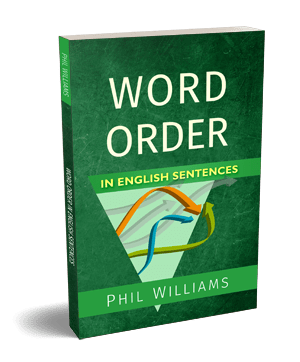 Continuing my short series of narrative examples to explain different uses (and the reasons behind different choices) in using past tenses, below is another brief past tense passage. The sentences are numbered, with full explanations below.
Continuing my short series of narrative examples to explain different uses (and the reasons behind different choices) in using past tenses, below is another brief past tense passage. The sentences are numbered, with full explanations below.
Past tense narrative example – The Breakdown
There was a problem with the car. (1)
Gemma was driving to the lake when she noticed it. (2) She had been hoping to get there before dark, but that seemed unlikely now. (3) In fact, it was starting to seem unlikely she would ever get there. (4) She had been driving for over an hour, and was tired. (5) The box on the passenger seat worried her. It had to go. No one could know her secret. (6)
Maybe, she reflected, throwing it in the lake was a bad idea. (7) She had known that the car had problems, after all. (8)
She parked at the side of the road and considered her options. There was a small group of trees by the side of the road. She wound down the window and picked up the box.
She gave it one last look. (9)
There had been so much more she wanted to do with it. (10) But they were already talking about it in town. (11) They liked to talk. (12)
She took a deep breath, and threw the box out of the window, into the woods. (13)
She tried to start the car again. (14) She looked up, though, and saw someone watching her. (15) A man in the trees had seen everything. (16) He glanced at the box, horrified. (17)
She cursed. (18)
- This narrative starts with a dramatic, short, past simple sentence. The past simple is used to use a state at a particular time in the past.
- The past continuous shows the action that was in process when this past narrative interrupted it; the past perfect continuous could also be used (for an action started before this past event) but the simple past continuous makes it more immediate.
- The past perfect continuous here shows she was in a process before this narrative began, had been hoping, but that has finished by this past narrative.
- The past continuous, starting to seem, is used because this was a process of change.
- The past perfect continuous here shows how long she had been driving, before this event in the past (when the narrative begins), which is for hours. She was tired, in the past simple, referring simply to a state at the time of the narrative.
- The narrative then uses a series of short past simple sentences, a sequence of complete ideas at this time in the past.
- The idea of throwing it in the lake actually occurred before the past narrative, so the past perfect would be appropriate here to show sequencing – but as she reflected on this, we are considering it from her perspective. At the time when she reflected, she may see the idea in the simple past, not past perfect. Without needing to quote her, the reader is put in her perspective.
- In contrast to above, though, she had known… is in the past perfect as she knew before the idea was formed, even from her past perspective.
- The main narrative continues in a series of past tense sentences, one after another – the past simple is fine for all of these.
- The past perfect is appropriate now because what she wanted to do was before this past narrative; she has made the decision not to do these things, so it is in the past, before this past event.
- The past continuous here, however, shows that the problem is an ongoing process; it started before this narrative, and was ongoing.
- As a general rule in the past, as this is, the past simple is appropriate.
- The narrative returns to past simple for a sequence of complete events.
- As above.
- The past simple demonstrates her actions in the main narrative, but we shift to the past continuous to show that the man was watching her at the time that she looked up. He had started to watch her before, and was in the process of it at this time.
- The past perfect shows he completed this action of seeing her before this event (her noticing the man).
- He now completes a different action, in simple past.
- And we finish by the subject completing another simple action.
Note throughout that the past simple is fine for building a narrative. When we deviate from the main narrative, to introduce new information that started before the subject of the story experienced it, the past continuous is useful, and when we want to show past events as a point of creating background, the perfect tenses are useful.
Sadly, though, none of these past tenses tell you what was in the box…






